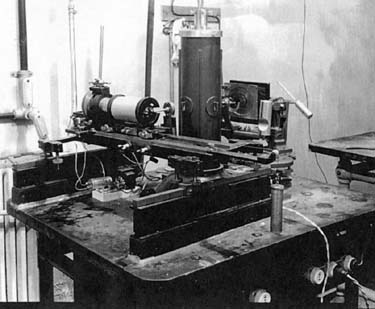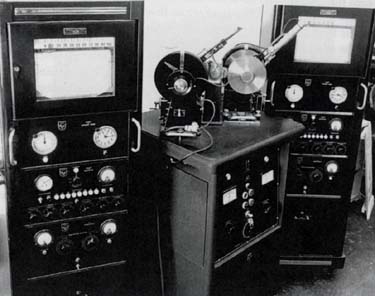The Beginnings of X-ray Crystallography
|
The crystallography program at the Geophysical Laboratory officially began in 1919, seven years after Laue’s discovery of X-ray diffraction. It was at this time that Arthur L. Day, the laboratory’s first director, hired Ralph W. G. Wyckoff as the first structural crystallographer. He would remain at the Geophysical Laboratory until 1927. The new program thrilled and intrigued Day. This sentiment was made obvious by the director’s 1920 letter to Wyckoff in which he wrote: “The field of activity in which your work falls is entirely new to this Laboratory, and for the most part new in this country. It is, I think, rare that a man at the outset of his career has such an unusual opportunity to enter and exploit a field of such vital importance to our knowledge of the structure of matter, a field, by the way, which will probably take you far beyond the immediate application which this Laboratory will wish to make of it. I heartily commend both your choice and your opportunity, and wish you every success in your work.” Few laboratories studied X-ray crystallography before the Geophysical Laboratory. Wyckoff himself familiarized himself with space-group theory and its pertinence to X-ray diffraction at Cornell University under Professor Shoji Nishikawa. |
|||
|
|
|||
|
|||
|
|
|||
|
One of the most difficult branches of X-ray crystallography was the early experimental work with gas X-ray tubes. Because of its delicate nature, procedures were often very time consuming. Fortunately, the Geophysical Laboratory staff member C. J. Ksanda was a Swiss-trained instrument maker who was well acquainted with the process. Along with Wyckoff, he conducted most of the laboratory work. His most famous contribution to the field came in 1932 when he designed the Ksanda twin gas tubes. Wyckoff introduced staff member Eugene Posnjak to X-ray crystallography. Together, they co-authored “The crystal structure of ammonium chloroplatinate” in 1922. The paper proved Werner’s Coordination Theory, stating that platinum is octahedrally surrounded by six chlorine ions. This was not the end of Posnjak and Wyckoff’s joint research. The two later studied alkali halides and cuprous halides. Posnjak went on to make additional impressive contributions to X-ray crystallography for the Geophysical Laboratory. He determined the crystal structure of alkali metal potassium. In 1928, he published the cell dimensions of spinel and other compounds of the spinel group. In order to study the magnetic properties of crystals, he even created several compounds and solid solutions containing ferrous and ferric iron. Posnjak was extraordinarily accomplished and relentless in preparative and experimental research. What he started he finished. |
|||
|
|
|||
|
|||
|
|
|||
|
One of the first woman scientists at the Geophysical Laboratory was Gabrielle Donnay, a scientist trained in X-ray crystallography. She joined the Washington team in 1950 as a fellow, and then as a staff member in 1955. She worked with the Laboratory’s director, L. H. Adams, on her first research program, a test on the precision of the new powder diffractometer. This led to the cell dimensions and cell volumes of a complete solidation series of alkali feldspars. In 1969, Donnay composed a paper detailing the first five decades of crystallographic research at the Geophysical Laboratory, noting that 183 papers on X-ray crystallography had been published by staff and fellows from the start of the program until that time. The Laboratory's program has continued to prosper ever since, and is widely known today for its pathbreaking advances in high-pressure and high-temperature crystallography. |
|||
|
|
|||
|
References:
Further Reading:
|


